For many car owners and enthusiasts, vehicle maintenance is both a responsibility and a passion. One of the most important aspects of vehicle care is checking the transmission fluid, which ensures that your car’s transmission—a vital component that allows the engine to power the wheels—operates smoothly. Usually, checking transmission fluid is a straightforward process using the dipstick, but what if your car is one of those that don’t come with a dipstick?
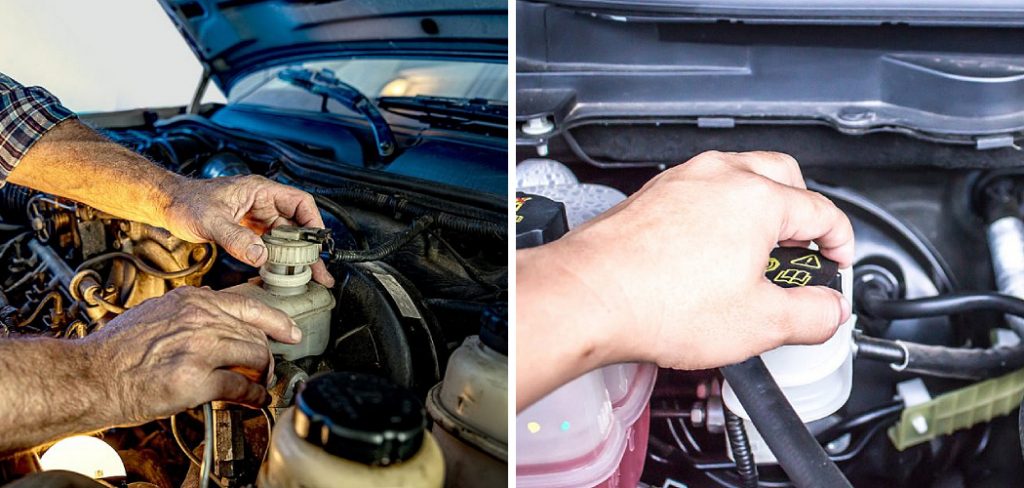
This comprehensive guide is for car owners facing this exact challenge for how to check transmission fluid without a dipstick. We will explore why it’s crucial to check your transmission fluid, methods to perform this task without a dipstick, and a step-by-step walkthrough to keep your transmission healthy and your vehicle running in peak condition.
The Significance of Checking Transmission Fluid Levels
Transmission fluid performs a multitude of critical functions; it acts as a lubricant for the moving parts inside your transmission, prevents overheating by dissipating heat away from the transmission, and helps in transmitting power from the engine to the transmission. Neglecting to check and maintain the proper transmission fluid level can lead to various problems, including erratic shifting, slipping gears, or even transmission failure.
By ensuring that the fluid is at the optimal level and condition, you can prolong the life of your transmission, achieve better fuel efficiency, and ensure a smoother driving experience. Therefore, understanding how to check and maintain your transmission fluid becomes essential for the overall health of your vehicle. Though it may seem daunting to do so without a dipstick, it is still possible using alternative methods.
Consulting the Owner’s Manual
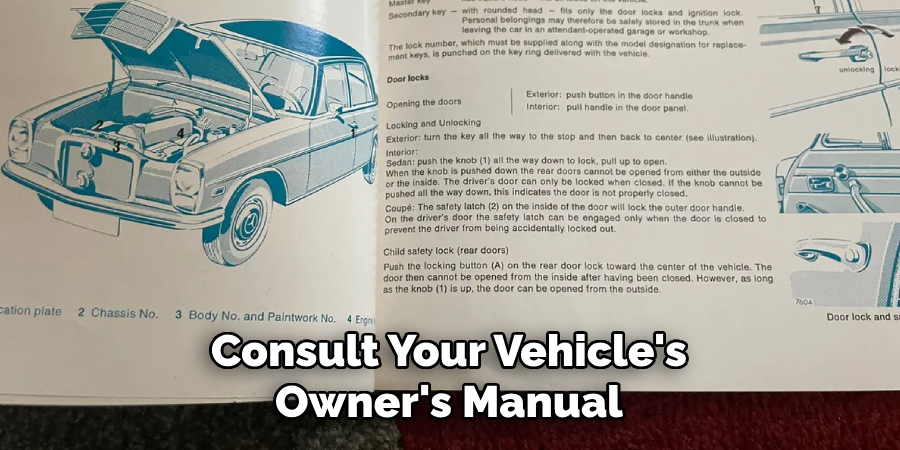
Before attempting any maintenance procedure, the starting point should always be to consult your vehicle’s owner’s manual. The manual typically provides specific instructions for checking the transmission fluid, even in vehicles that do not have a dipstick. Manufacturers will often include the preferred method for checking the fluid level, the type of transmission fluid required, and service intervals.
Additionally, the manual might give you insight into specific signs and symptoms of low transmission fluid or when to seek professional assistance. Following the guidance provided by your vehicle’s manufacturer is crucial to ensure that you do not inadvertently cause damage to your transmission during the checking process.
However, if your owner’s manual does not have this information or is unavailable, there are still alternative methods you can use to check your transmission fluid without a dipstick.
Why Check Transmission Fluid?
Preventing Damage to the Transmission
Transmission fluid plays a key role in ensuring that the various intricate parts of the transmission system operate without causing excess friction, heat, or damage. Low or contaminated fluid can lead to severe issues such as gear slippage, rough shifting, or a complete transmission failure, which can be a costly repair.
Ensuring Smooth Gear Shifting
Without proper lubrication from the transmission fluid, gear shifts could become challenging, leading to a less comfortable driving experience and even a safety hazard in certain conditions, such as unexpected stops or turning.
Extending the Lifespan of the Vehicle
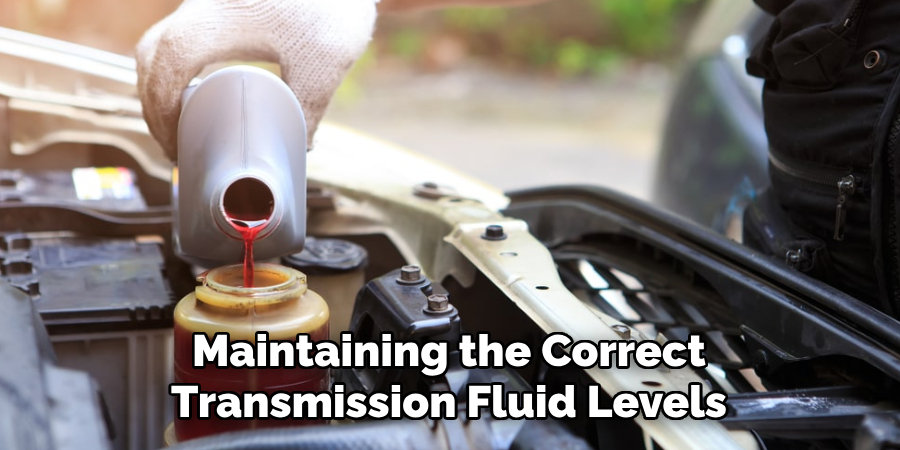
Regularly checking and maintaining the correct transmission fluid levels and quality can significantly extend the lifespan of your vehicle’s transmission, which is among the most expensive components to replace.
Utilizing Scan Tools for Electronic Transmissions
For vehicles with electronic transmission systems that lack a traditional dipstick, the use of a professional scan tool or code reader may be required to accurately check the fluid level. These advanced tools can interface with the vehicle’s computer system to provide a precise reading of the transmission fluid’s condition and level. Dealerships and auto repair shops typically have these tools on hand, and they can perform the check quickly during a regular service visit.
For the more technically savvy car owner, investing in a personal scan tool for home use is an option that can pay off in the long run by allowing for regular and convenient self-checks of the transmission fluid and other vital diagnostics. While scan tools may be a more expensive option, they provide the most accurate and reliable method for checking transmission fluid levels without a dipstick.
However, it’s important to note that using these tools may still require knowledge of the specific transmission fluid level and quality recommendations for your vehicle.
Locating and Using the Fluid Level Check Plug
In the absence of a traditional dipstick, many vehicles are equipped with a transmission fluid level check plug that allows for manual checking. This plug is typically located on the side of the transmission case, often below the fluid fill port, or at times on the bottom to serve as a drain plug as well. To check the fluid level:

- Ensure the Vehicle is Level: Before proceeding, make sure that your car is parked on a level surface to get an accurate reading of the fluid level.
- Warm Up the Transmission: Drive your car for a few minutes to warm up the transmission fluid. This usually requires the fluid to be at operating temperature for an accurate level check.
- Locate the Check Plug: Consult your vehicle’s service manual to locate the fluid level check plug. It’s often necessary to lift the vehicle and safely support it with jack stands to access the plug.
- Remove the Check Plug: Once you’ve located the plug, carefully remove it. Some fluid may come out if the fluid is overfilled, or none may emerge if the level is correct or low.
- Checking Fluid Level: If no fluid comes out when you remove the plug, you may need to add transmission fluid. Insert a small hose or funnel into the check plug hole and add the manufacturer-recommended fluid slowly.
- Checking Fluid Condition: While the fluid is at a proper level when it slightly dribbles out, its condition should also be checked. Good transmission fluid is typically a bright red color and should not smell burnt.
- Reinstalling the Check Plug: Once you’ve completed checking and adjusting the fluid level, replace the check plug using a new sealing washer if necessary, and ensure it is tightened to the manufacturer’s specified torque setting.
Remember that overfilling the transmission can be just as harmful as running it with low fluid, so it’s crucial to add fluid incrementally and recheck the level several times during the process. If you’re unsure about the process or encounter any issues, it’s best to seek professional assistance.
Methods to Check Transmission Fluid without a Dipstick
Luckily, not all is lost if your vehicle lacks a transmission dipstick. There are alternative methods to assess your transmission fluid level and condition.
1. Look for Alternative Dipstick Locations
Some modern vehicles are designed with hidden dipstick, often in unusual, non-obvious locations. Your manufacturer’s manual can guide you where to find these. Alternatively, you may need to consult a professional mechanic who is familiar with your vehicle make and model.
2. Use the Transmission Fill Plug
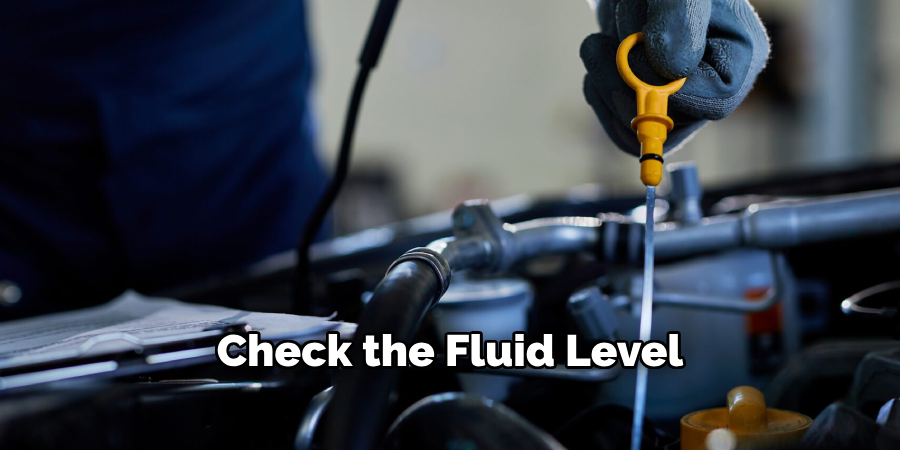
In vehicles with a non-serviceable transmission (meaning they don’t require regular fluid changes), you may find a fill plug that can be used to both fill and check the fluid level. This involves removing the plug and using a tool or your finger to gauge the level, similar to how a dipstick would operate.
3. Observe the Transmission Fluid Color and Smell
Your transmission fluid can tell a story about the state of your transmission. New fluid is typically red or green, and over time, it will darken. It shouldn’t have any burnt smell or contain metal particles. A brownish color or burnt smell may indicate issues and necessitate a more thorough inspection.
Step-by-Step Guide on How to Check Transmission Fluid without a Dipstick
Your transmission fluid should be checked as part of your regular vehicle maintenance. We’ll detail the steps to be taken if your car lacks a dipstick.
1. Park the Vehicle on a Level Surface
To obtain an accurate reading, your car must be on a level surface. This ensures that the fluid is settled and the correct level can be measured. Use a spirit level on a surface you believe to be flat, ensuring it is indeed level before continuing.
2. Warm Up the Engine and Transmission
Start the engine and allow it to warm up. The transmission fluid should be at operating temperature, which is usually reached after driving a few miles or letting the car idle for a short time.
3. Locate the Fill Plug
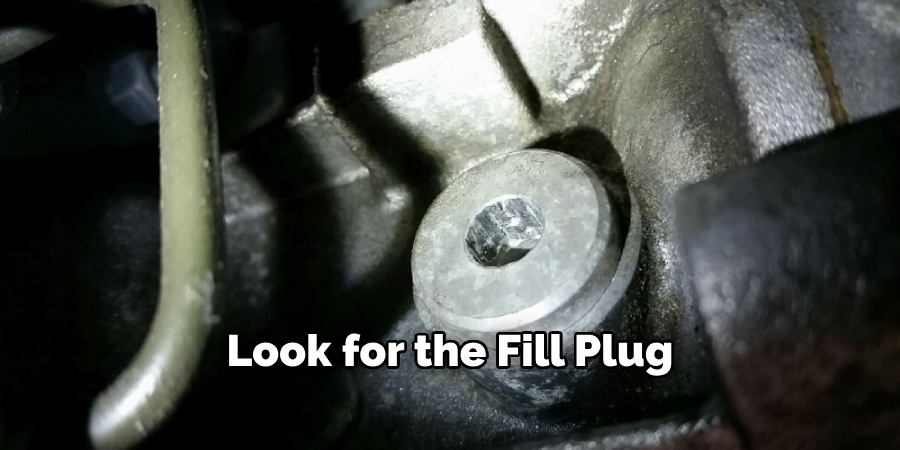
As mentioned, if your vehicle doesn’t have a dipstick, you should look for the fill plug, which is often near the transmission case. Refer to your owner’s manual or a reliable source for the exact location.
4. Observe the Fluid Level
Remove the fill plug and check the level. On some cars, this might require a mechanic’s mirror and strong flashlight to see inside the transmission filler neck. If the fluid level is below the ‘full’ line, add the appropriate type of transmission fluid until it reaches the correct level.
5. Inspect for Leaks
Monitor the ground beneath your vehicle for any signs of leaking transmission fluid. Reddish or brown spots can indicate that your transmission is leaking, a problem that should be addressed by a professional.
Seeking Professional Assistance
If you are uncertain about any steps in checking your transmission fluid or uncomfortable performing them yourself, it’s time to seek professional help. A qualified mechanic can provide a comprehensive checkup and perform the necessary maintenance. They’ll have the correct equipment to accurately check fluid levels without a dipstick and will be able to advise on any required fluid changes or repairs.
Moreover, a professional can diagnose issues that might not be apparent to the average car owner, such as internal wear or damage. Regular professional inspections can save you time and prevent costly repairs down the line, ensuring that your vehicle remains reliable on the road. Although checking transmission fluid without a dipstick may seem daunting, it’s an essential task that can keep your car running smoothly and extend its lifespan.
With the right knowledge and tools, you can confidently maintain your vehicle’s transmission and avoid costly repairs in the future.

So be sure to check your owner’s manual or consult with a trusted mechanic for any specific instructions relating to your vehicle make and model and make checking your transmission fluid a regular part of your vehicle maintenance routine. Whatever steps you take, always be sure to follow the recommended guidelines from your vehicle manufacturer or a professional mechanic.
Regularly checking your transmission fluid can save you time, money, and potential headaches in the long run. Don’t neglect this important aspect of vehicle maintenance – keep
Performing a Test Drive
After checking transmission fluid levels and addressing any potential issues, performing a test drive is a crucial final step. It allows you to assess whether the transmission is functioning properly across various driving conditions. Before embarking, start your vehicle and let the engine reach its normal operating temperature. During the test drive, pay close attention to how the vehicle shifts gears: it should be smooth and without any hesitation or abnormal noises.
Keep an eye on the performance as you accelerate, decelerate, and while driving at a constant speed. Also, listen for any unusual sounds that could indicate a problem with the transmission. Should the vehicle not operate as expected or if you hear or feel anything unusual, it’s advisable to consult with a professional mechanic for a thorough inspection and diagnosis.
However, if everything appears normal, your transmission fluid is at the correct level and not showing any signs of issues, you should be good to go! Just remember to perform regular checks and maintenance on your vehicle’s transmission to ensure its longevity and smooth operation. By following these steps and staying vigilant about your car’s transmission health, you can confidently hit the road knowing that your vehicle will
Regular Maintenance and Monitoring
Routine checks and maintenance are vital in ensuring your vehicle’s transmission fluid is always at optimal levels and condition. It’s recommended to schedule regular inspections as part of your overall vehicle maintenance routine. During these inspections, a mechanic should examine the fluid’s color, smell, and consistency. Furthermore, they should be on the lookout for any potential leaks or irregularities in the transmission system.

By adhering to a consistent maintenance schedule, you can prevent small issues from escalating into major repairs, thereby saving time, money, and extending the overall life of your vehicle. Although checking transmission fluid without a dipstick may seem like an inconvenient task, it is a crucial aspect of vehicle care that should not be overlooked. With the right knowledge and tools, you can ensure your car’s transmission remains in top condition for years to come.
So, make sure to regularly monitor your transmission fluid and address any issues promptly to keep your vehicle running smoothly and safely.
Be Aware of Safety Precautions
Be cautious of the engine and any moving parts. Ensure the vehicle is securely on the ground with the wheels chocked to prevent rolling. Take care when removing any plugs that may have hot fluid inside and follow factory recommended procedures and safety practices.
By following these guidelines, you’re taking an active role in the care and maintenance of your vehicle’s transmission. Prevention is always better than cure, and maintaining your transmission fluid is a fantastic way to keep your car on the road and running smoothly.
If you’re unsure or uncomfortable with checking your transmission fluid yourself, it’s always best to consult a professional mechanic. Remember, your vehicle is a mechanical wonder filled with complexities tailored to make your driving experience safe and enjoyable. Treat it well, and it will return the favor with many miles of reliable service.
Your car might not have been built with a dipstick for the transmission, but it was certainly built to be reliable and safe. Make the effort to check and possibly change your transmission fluid as needed, and you’ll be extending the life and function of an incredibly important part of your vehicle. Keep these steps in mind the next time you perform routine maintenance—you’ll be glad you did.
Conclusion
In conclusion, mastering the art of checking transmission fluid without a dipstick is a valuable skill for any vehicle owner, especially those with modern cars equipped with sealed transmission systems. By understanding how to check transmission fluid without a dipstick, utilizing alternative methods, and employing the right tools, you can ensure the optimal performance and longevity of your vehicle’s transmission.
Whether it involves consulting the owner’s manual, using a scan tool, or relying on the fluid level check plug, taking proactive measures to maintain proper transmission fluid levels is essential for preventing potential issues and costly repairs.
Embracing these alternative methods empowers car owners to stay vigilant about their vehicle’s health, demonstrating a commitment to responsible maintenance practices that contribute to smooth and efficient driving experiences. Remember, a well-maintained transmission is a key factor in the overall reliability and performance of your vehicle, underscoring the importance of periodic fluid checks even in the absence of a traditional dipstick.

About
JeepFixes Team is a skilled author for Jeep Fixes, bringing 6 years of expertise in crafting a wide range of jeep fixes. With a strong background in jeep fixes work, JeepFixes Team’s knowledge spans various types of fixtures, from decorative pieces to functional hardware, blending precision with creativity. His passion for jeep fixes and design has made him a trusted resource in the industry.
Professional Focus:
Expert in Jeep Fixes : JeepFixes Team aesthetic specializes in creating durable and innovative jeep fixes, offering both appeal and functionality. His work reflects a deep understanding of jeep fixes techniques and materials.
Sustainability Advocate : He is dedicated to using sustainable practices, ensuring that every fixture is crafted with eco-friendly methods while maintaining high-quality standards.
In his writing for jeep fixes, JeepFixes Team provides valuable insights into the latest trends, techniques, and practical advice for those passionate about jeep fixes, whether they are professionals or DIY enthusiasts. His focus on combining artistry with engineering helps others discover the true potential of jeep in design.
